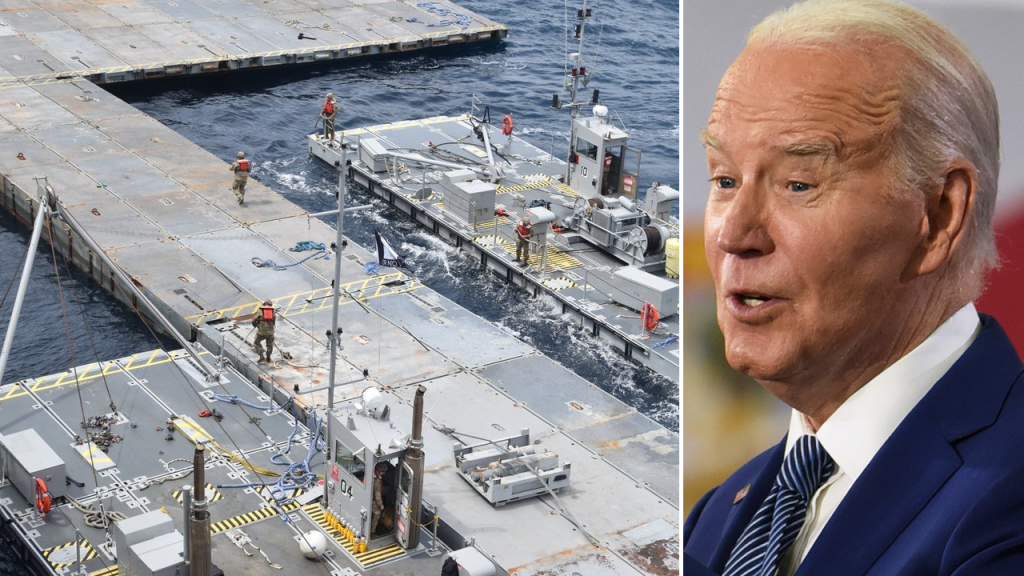A controversial project involving the construction of a floating pier off the coast of Gaza to facilitate humanitarian aid shipments has raised concerns due to escalating costs. Originally estimated at $180 million, the project is now expected to cost upwards of $320 million. Some critics have labeled the effort as ill-conceived and a waste of taxpayer money, especially given that the pier will only be in use for a temporary period of three months. Despite the criticism, the U.S. military is moving forward with the construction, aiming to provide much-needed assistance to the civilian population in Gaza.
The pier project, known as the Joint Logistics Over-the-Shore (JLOTS) pier, is being constructed by U.S. soldiers in the Mediterranean Sea to support USAID and other humanitarian partners. The pier is expected to serve as a vital lifeline for the people of Gaza, allowing for the delivery of aid by sea directly into the region. However, concerns have been raised about the security of U.S. troops involved in the project, particularly in the face of potential threats from groups like Hamas. Defense Secretary Lloyd Austin has emphasized that U.S. personnel working on the pier will be armed and authorized to defend themselves if attacked.
Questions have been raised about the long-term viability of the pier once construction is completed. With the possibility of Hamas attempting to sabotage the project, there are uncertainties about who will ultimately operate the pier. Some experts warn that handing over control to entities like the Qataris could effectively place the project under Hamas’s influence, potentially undermining U.S. efforts to stabilize the region. The presence of the Israel Defense Forces (IDF) in Gaza may also play a crucial role in securing the pier and ensuring the safe transfer of aid within the region.
Amidst ongoing efforts to secure a ceasefire between Israel and Hamas, the U.S. faces complex challenges in navigating its involvement in the Gaza region. While pushing for a peace agreement with Hamas, the U.S. is simultaneously tasked with ensuring the security of aid shipments and personnel involved in the pier project. The IDF has indicated its commitment to supporting the aid initiative and working collaboratively with international partners to address the humanitarian crisis in Gaza. The project’s success hinges on establishing effective security protocols and cooperation among all stakeholders involved.
As the floating pier project progresses, international observers are closely monitoring its impact on the broader Middle East region. The involvement of countries like Cyprus in facilitating aid deliveries to Gaza has the potential to enhance regional security and stability. By establishing a reliable aid channel that bypasses traditional routes through Egypt, the project could help prevent the re-arming of Hamas and contribute to long-term peace efforts in the area. Encouraging the institutionalization of the aid delivery process and strengthening border security measures could yield lasting benefits for the entire region.
The success of the floating pier project will depend on effective coordination among key stakeholders, including the U.S. military, humanitarian organizations, and regional governments. While concerns persist about escalating costs and potential security threats, the project represents a significant opportunity to alleviate the suffering of civilians in Gaza and promote stability in the region. By addressing logistical challenges and ensuring the safe transfer of aid, the pier initiative has the potential to make a positive impact on the lives of thousands of people in Gaza.


